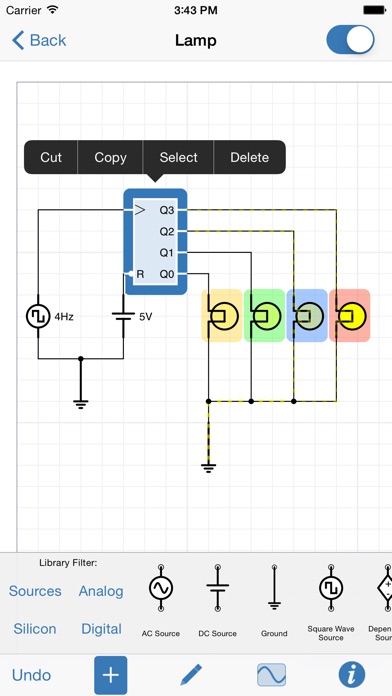

Custom elements icircuit windows verification#
The Altium Designer circuit simulator is used for engineering analysis and verification of electrical circuits based on SPICE technology. Configuring special components in the Properties panel.General methods of using the Simulation Dashboard.Functions when working with calculation results.Modifiers for calculations and settings.Define user expressions (Output Expressions).Calculation of the transient process (Transient).

Calculate operating point (Operating Point).Define simulator Setup & Run parameters (Setup & Run Parameters).Add signal sources (Simulation Sources).Project verification for the simulator (Verification area).Control the scope of the simulator (Affect setting).The impedance is proportional to the frequency-dependent voltage and frequency-dependent current, where is the angular frequency of an oscillating sine wave. The definition of impedance comes from electrical circuits, and as a result, voltage is commonly used to define impedance. However, in electrochemical impedance spectroscopy, we will switch from using voltage to electrical potential. Electrical potential is the energy per unit charge gained or lost when current is moved from a known reference point. Voltage represents the difference in potential between two points. For example, in Figure 1.1, point (a) could have a potential of +100 V and point (b) could have a potential of +101 V with respect to a known reference point, such as ground. In this case, the voltage between (a) and (b) is +1 V. In electrochemical systems, a reference electrode acts as a stable reference point. The potential of the working electrode is measured or applied with respect to the reference electrode potential. There are exceptions to this practice, but in general, the electrochemical potential is used in most electrochemical experiments. For the remainder of this article, the electrical or electrochemical potential will be used when describing EIS. In the electrochemical system, the potentiostat applies a positive bias to the working electrode with respect to the reference electrode. The positive charge from the working electrode attracts the negatively charged anions to the working electrode surface. The anions are solvated by solvent molecules, and when the anion reaches the electrode surface the solvent molecules surrounding the anion make contact with the electrode surface. This forms a type of capacitor at the electrode surface. A capacitor consists of two oppositely charged plates separated by a dielectric material. In our electrochemical system, the positive charge from the electrode surface is one plate, solvent molecules form the dielectric, and the negatively charged anions form the other plate. This is known as the electrochemical double-layer. The electrochemical system also consists of analyte molecules diffusing around the electrode surface. If we apply a sufficiently positive potential to the working electrode, we can induce an electron transfer (oxidation) from the analyte to the electrode surface. Recall Ohm's law (Equation 1.1) from Section 1, where a resistor can be thought of as a measure of the additional potential needed to drive current through a circuit. Similar to Ohm's law, the electron transfer process can be modeled between the analyte and the electrode as a resistor. Lastly, beyond the electrode surface is the bulk solution where the counter and reference electrodes are located. The electrolyte solution is not a perfect conductor of charge and as such, there is solution resistance between the electrodes as well, which can be modeled as another separate resistor. The Randles circuit consists of a resistor and a capacitor in parallel, and that circuit is occasionally characterized by its RC time constant. An RC time constant describes how long the capacitor takes to charge up to ~63.2% of its maximum value, or how long it takes to discharge to ~36.8% of its maximum value. Electrochemical processes can be thought of in a similar way.ĭepending on the values of the resistor and capacitor, it could take a long or short time for the capacitor to charge. Each electrochemical interface, whether it's a solid/liquid interface or a solid/solid interface can be modeled electrochemically as a Randles or RC circuit. If the time constants of each interface are sufficiently different, then EIS can be used to detect and measure them.


 0 kommentar(er)
0 kommentar(er)
